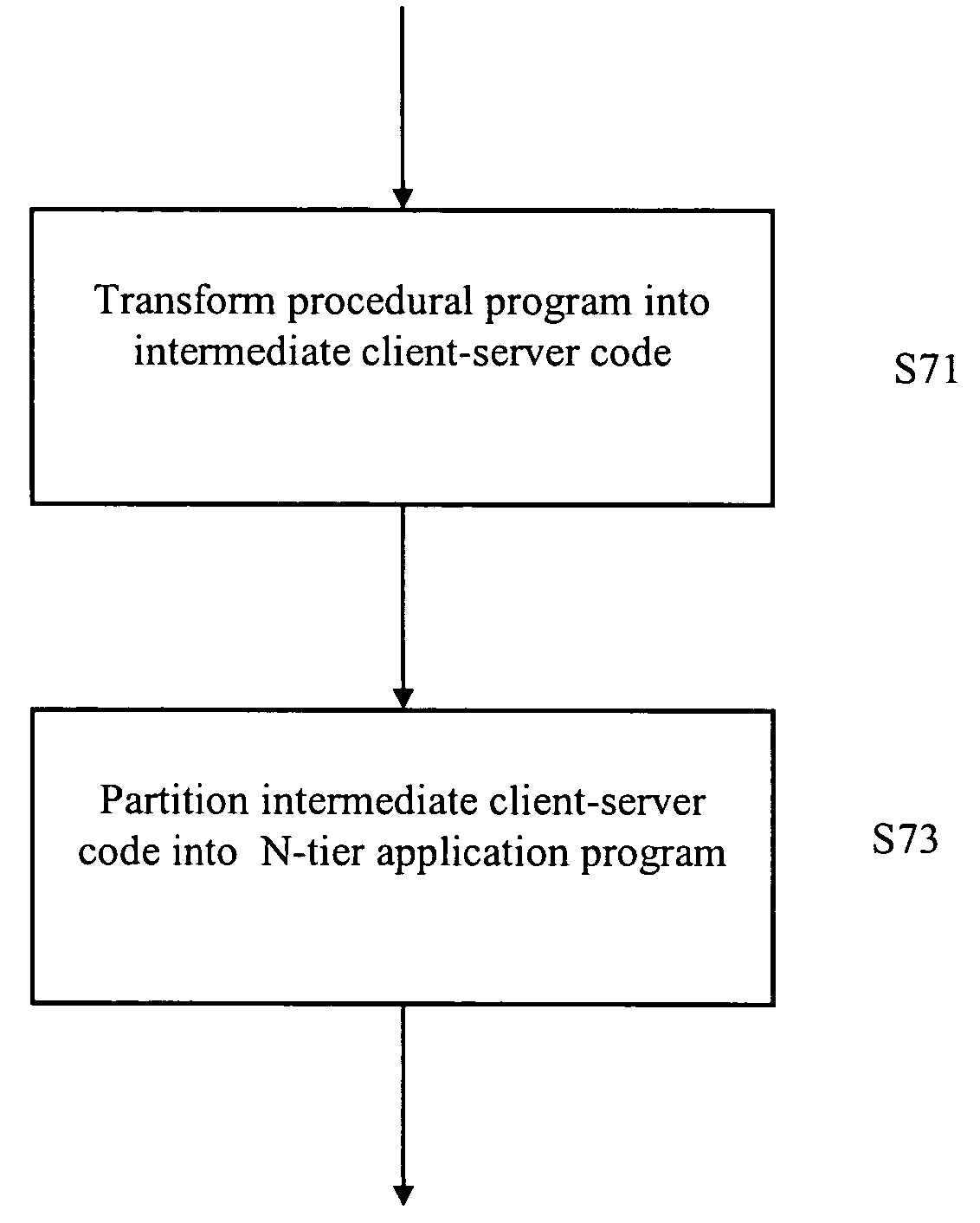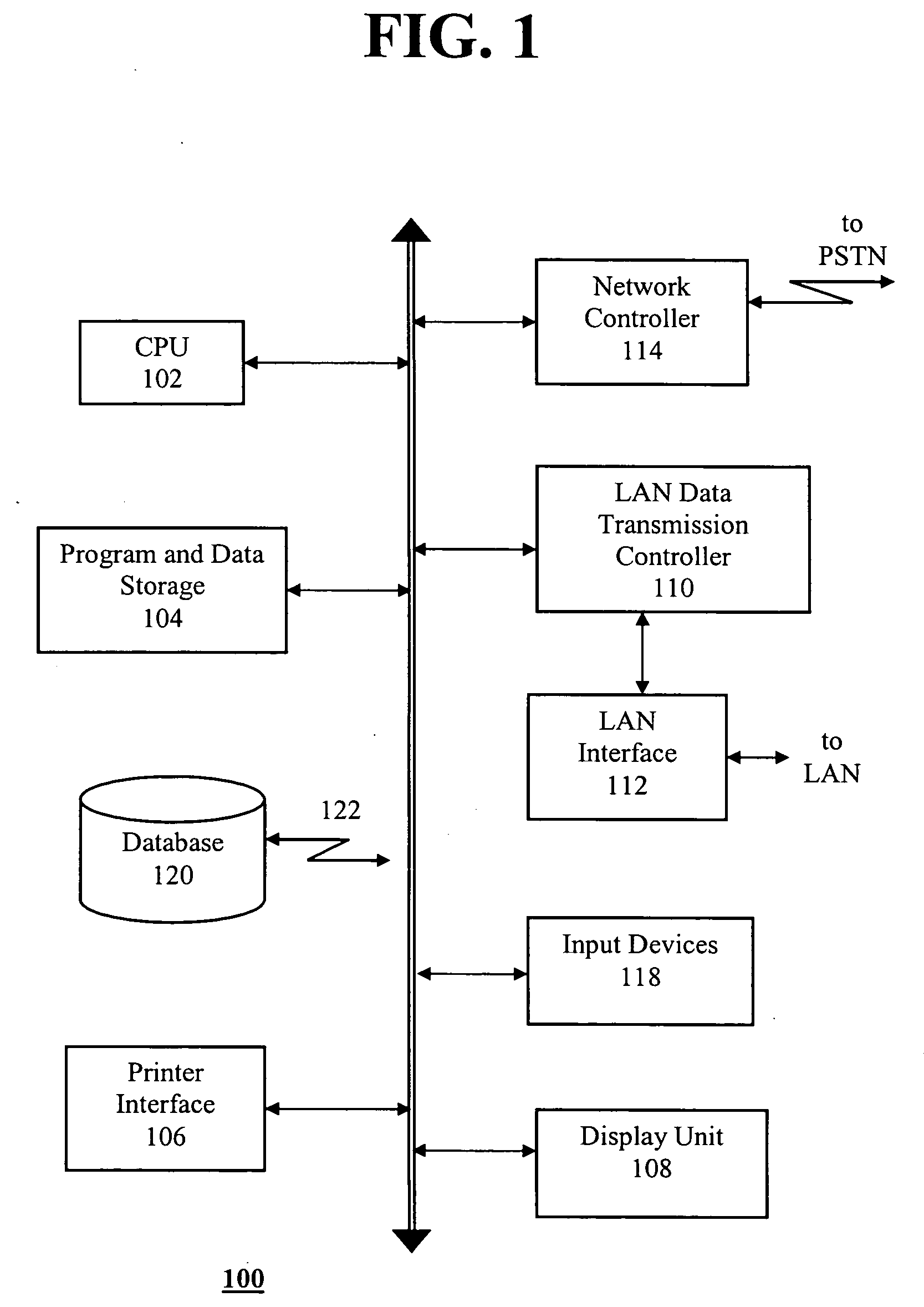Method and apparatus for transforming legacy software applications into modern object-oriented distributed systems
a distributed software and legacy software technology, applied in the field of computer program transformation, can solve the problems of low level of assembly language operations, difficult writing applications, and form implementation using code,
- Summary
- Abstract
- Description
- Claims
- Application Information
AI Technical Summary
Problems solved by technology
Method used
Image
Examples
Embodiment Construction
[0033] This application provides tools (in the form of methods, apparatuses and systems) for transforming a procedural program having procedural language code into an object-oriented distributed software system. The tools may be embodied in one or more computer programs stored on a computer readable medium and / or transmitted via a computer network or other transmission medium.
[0034] In describing some exemplary embodiments, specific terminology is employed herein in order to preserve clarity. However, the present disclosure is not intended to be limited to the specific terminology so selected, and it is to be understood that each specific element includes all technical equivalents which operate in a similar manner.
[0035]FIG. 1 shows an example of a conventional computer system which can be adapted, along with other similar computers, for implementing the methods, apparatuses and systems of the present disclosure. The tools of the present disclosure may be implemented in the form o...
PUM
 Login to View More
Login to View More Abstract
Description
Claims
Application Information
 Login to View More
Login to View More - R&D
- Intellectual Property
- Life Sciences
- Materials
- Tech Scout
- Unparalleled Data Quality
- Higher Quality Content
- 60% Fewer Hallucinations
Browse by: Latest US Patents, China's latest patents, Technical Efficacy Thesaurus, Application Domain, Technology Topic, Popular Technical Reports.
© 2025 PatSnap. All rights reserved.Legal|Privacy policy|Modern Slavery Act Transparency Statement|Sitemap|About US| Contact US: help@patsnap.com



